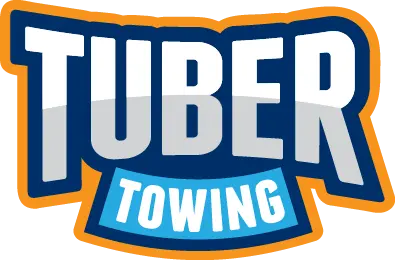Types of Towing Services

Types of towing services can vary depending on your situation—learn the 6 most common towing options and when to use them to ensure safe and efficient vehicle recovery. Whether you’re stuck roadside or moving a motorcycle, this guide breaks down everything you need to know. Towing isn’t a one-size-fits-all solution; there are various types of towing services tailored to different situations. Understanding what each service offers ensures you get the help you need quickly and safely.
In this article, we’ll break down the different types of towing services, explain when to use them, and share how you can learn more through our YouTube channel, TuberTaylor, where we cover all things towing, automotive tips, and roadside assistance.
1. Flatbed Towing
Flatbed towing is one of the most common and safest towing methods. A flatbed truck has a long, empty bed with a flat top that can be inclined or slid back to ground level, allowing the vehicle to be loaded easily.
When to Use Flatbed Towing:
- Your vehicle is severely damaged or completely undriveable.
- You own a luxury or exotic car that needs to be transported without wear and tear.
- Your car has all-wheel drive, which can’t be towed with two wheels on the ground without risking transmission damage.
Flatbed towing is ideal when you want to ensure minimal contact between the vehicle and the road. It’s especially useful for long-distance towing.
👉 For a detailed demo of how flatbed towing works, check out our video on TuberTaylor where we show a real flatbed operation in action.
2. Wheel-Lift Towing
Wheel-lift towing is a more affordable and quicker option compared to flatbed towing. It uses a metal yoke that lifts either the front or rear wheels of the vehicle off the ground.
When to Use Wheel-Lift Towing:
- Short-distance towing for a car that still has at least one set of working wheels.
- Emergency roadside assistance in urban areas with narrow streets.
- Budget towing needs where minimal towing equipment is acceptable.
While not as protective as flatbed towing, it gets the job done for basic towing needs. Be cautious if you have an all-wheel or four-wheel drive car, as this method may cause drivetrain damage.
3. Hook and Chain Towing
Once the standard in the towing industry, hook and chain towing has largely fallen out of favor due to the damage it can cause to vehicles. It involves attaching a chain around the vehicle’s axle or frame and towing it with the back wheels on the ground.
When to Use Hook and Chain Towing:
- Transporting junk cars to a scrapyard.
- Towing vehicles that are no longer roadworthy or intended for repair.
This method is not recommended for modern cars, as it can damage the paint, bumper, or drivetrain. However, it still sees limited use in specific cases.
🛠 See why modern tow trucks avoid this method in our educational playlist on TuberTaylor.
4. Integrated Tow Trucks (Boom Trucks)
Integrated tow trucks, also known as boom trucks, combine multiple towing capabilities into one. These are heavy-duty machines often used for towing buses, tractor-trailers, and large commercial vehicles.
When to Use Integrated Towing:
- Recovering large vehicles from accident scenes.
- Towing buses, RVs, or semi-trucks.
- Specialized operations like pulling vehicles out of ditches or tight spaces.
These trucks are equipped with wheel-lift and boom mechanisms, making them versatile and powerful.
📽 Want to see how boom trucks lift massive vehicles? We feature real-world examples on TuberTaylor’s YouTube channel.
5. Motorcycle Towing
Motorcycles require a different type of towing approach to ensure they remain upright and secure during transport. Some companies use flatbed trucks with motorcycle wheel chocks or specialized trailers.
When to Use Motorcycle Towing:
- Your bike breaks down and cannot be ridden safely.
- Transporting motorcycles long-distance without risk of damage.
- Accident recovery where stability is crucial.
Motorcycle towing ensures your ride gets from point A to B without the risk of tipping or scraping.
🔧 Check our motorcycle towing checklist to ensure your bike is properly prepped for the trip
6. Heavy-Duty Towing
Heavy-duty towing is reserved for oversized vehicles like construction equipment, dump trucks, or fire engines. These jobs require special equipment, permits, and experienced operators.
When to Use Heavy-Duty Towing:
- Moving oversized or immobile machinery.
- Towing tractor-trailers or large utility trucks.
- Emergency recovery of large vehicles after crashes or breakdowns.
Heavy-duty towing services are more expensive, but they’re essential for transporting anything over 17,000 lbs.
🚛 Want a behind-the-scenes look? Watch our Heavy-Duty Towing Series on TuberTaylor.
Final Thoughts
Towing isn’t just about dragging a broken-down car—it’s about using the right equipment and approach for each situation. Whether you’re dealing with a flat tire in the city or transporting a luxury vehicle across the state, there’s a specific towing service designed for your needs.
Understanding your options helps you make informed decisions when time is critical. Be sure to keep a reliable towing company’s number saved in your phone—and don’t hesitate to ask what type of tow truck they’ll be sending.
✅ Quick Tips:
- Use flatbed towing for safety and all-wheel-drive cars.
- Wheel-lift towing is best for quick, urban jobs.
- Avoid hook and chain unless it’s a junk vehicle.
- Choose integrated or heavy-duty towing for large vehicles or complex recoveries.
🚨 Learn More with TuberTaylor
Want to see these towing methods in action? Visit our YouTube channel, TuberTaylor, where we post weekly videos covering:
- Towing tips and tutorials
- Behind-the-scenes footage from real recovery jobs
- Equipment reviews
- Roadside safety tips and more
🔔 Don’t forget to subscribe and hit the bell so you never miss an update!
